Abstract
An adolescent female with multiple handicaps and a long history of severely disruptive behavior participated in a functional assessment linked directly to specific revisions in her school curriculum. During Phase 1, reversal designs were used to test hypotheses pertaining to antecedent and curricular influences on problem behavior. During Phase 2, a multiple baseline across afternoon and morning time periods demonstrated that the curricular revisions were effective in eliminating severely disruptive behavior and increasing on-task responding. Data also showed that inappropriate "psychotic" speech was reduced and appropriate social interactions were increased. Follow-up results showed that the changes were maintained throughout the school year. Questionnaire data provided social validation of the procedures and outcomes. The findings are discussed in relation to their implications for functional assessment, individualized curricula, and positive programming for students with disabilities and serious behavior problems.
Full text
PDF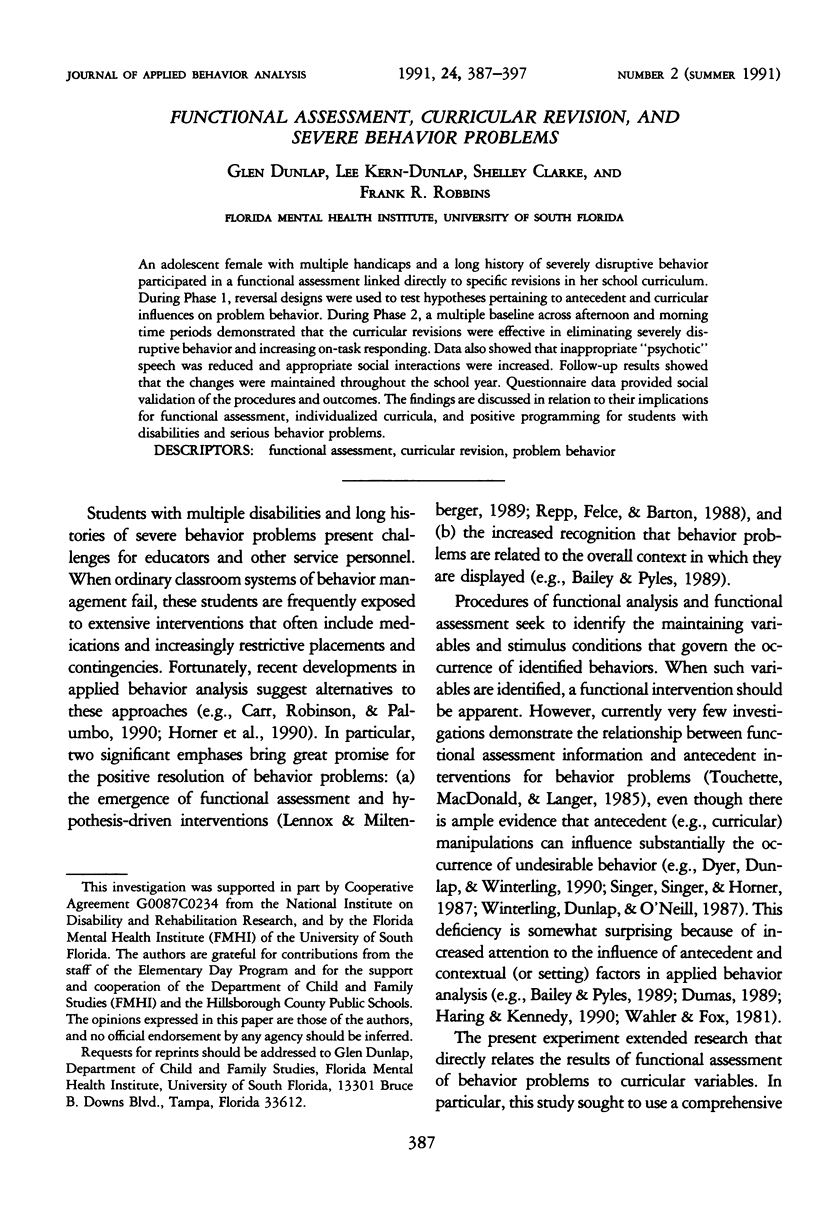
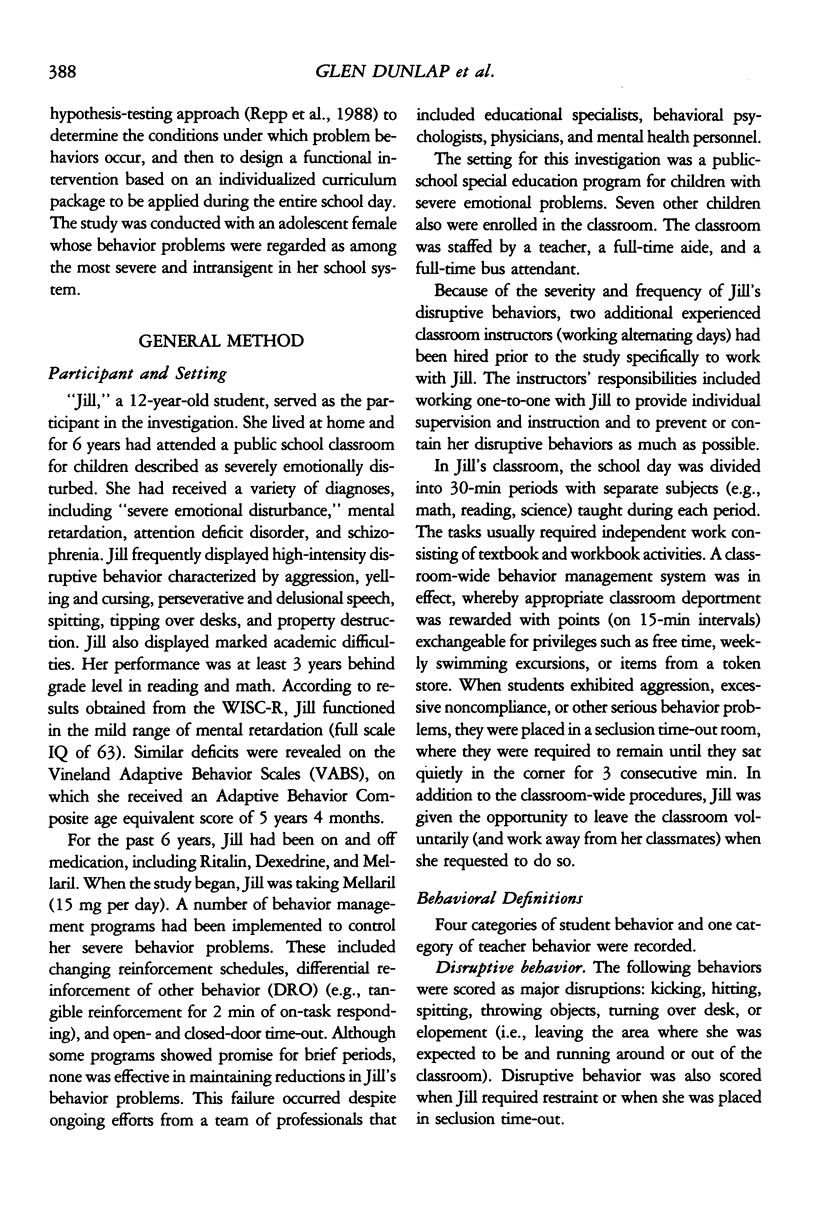

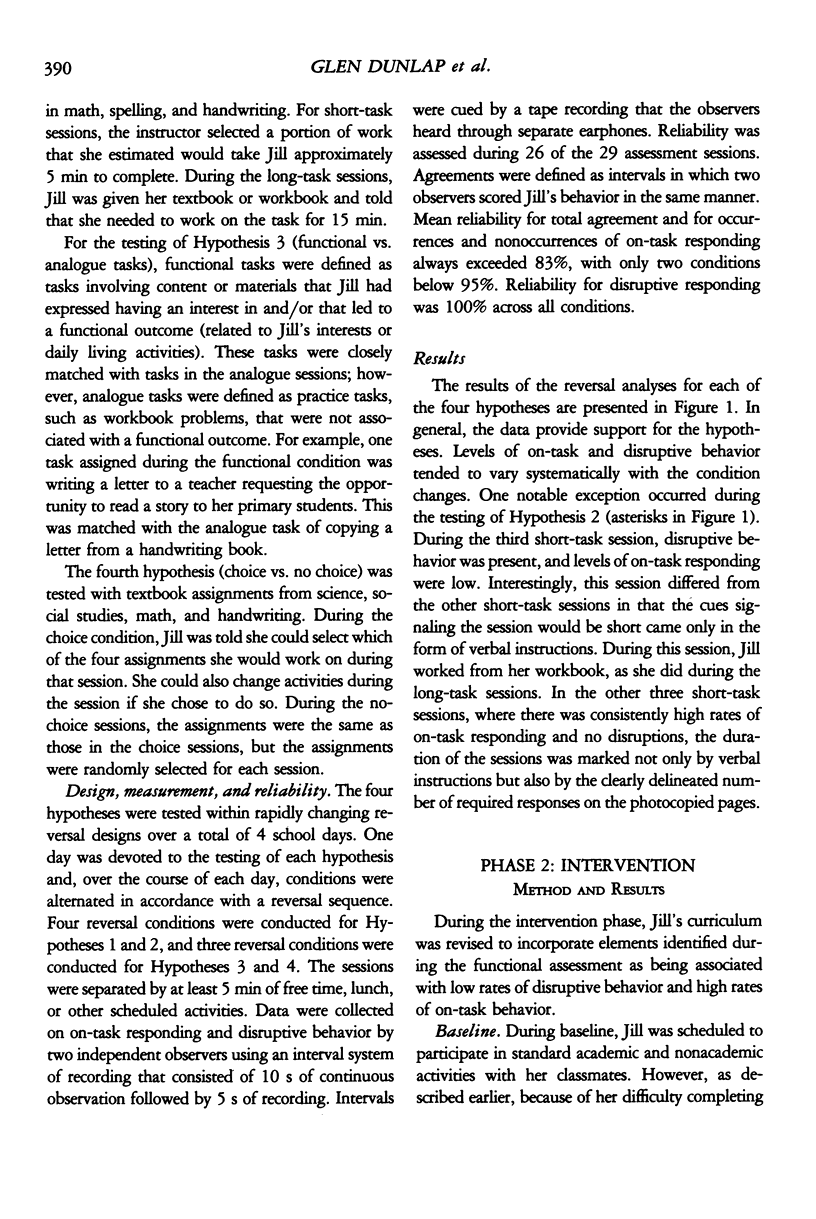

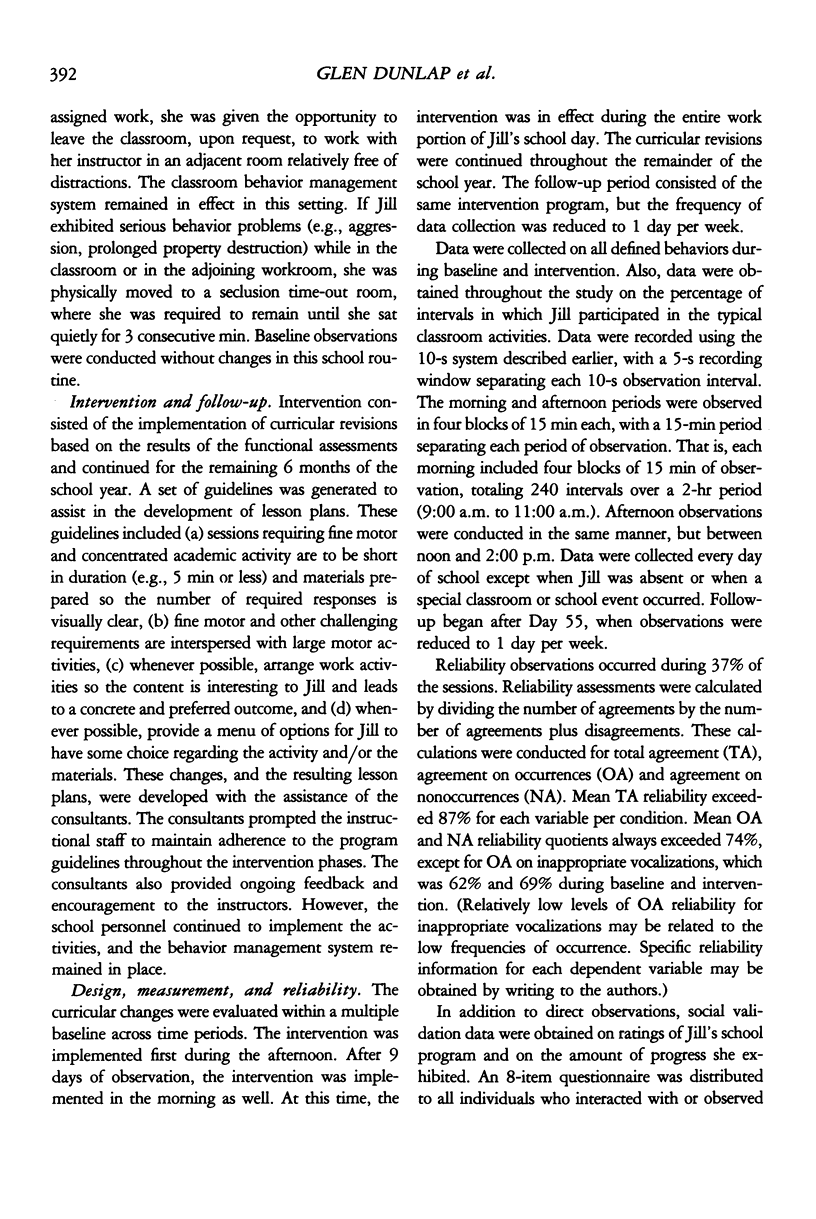
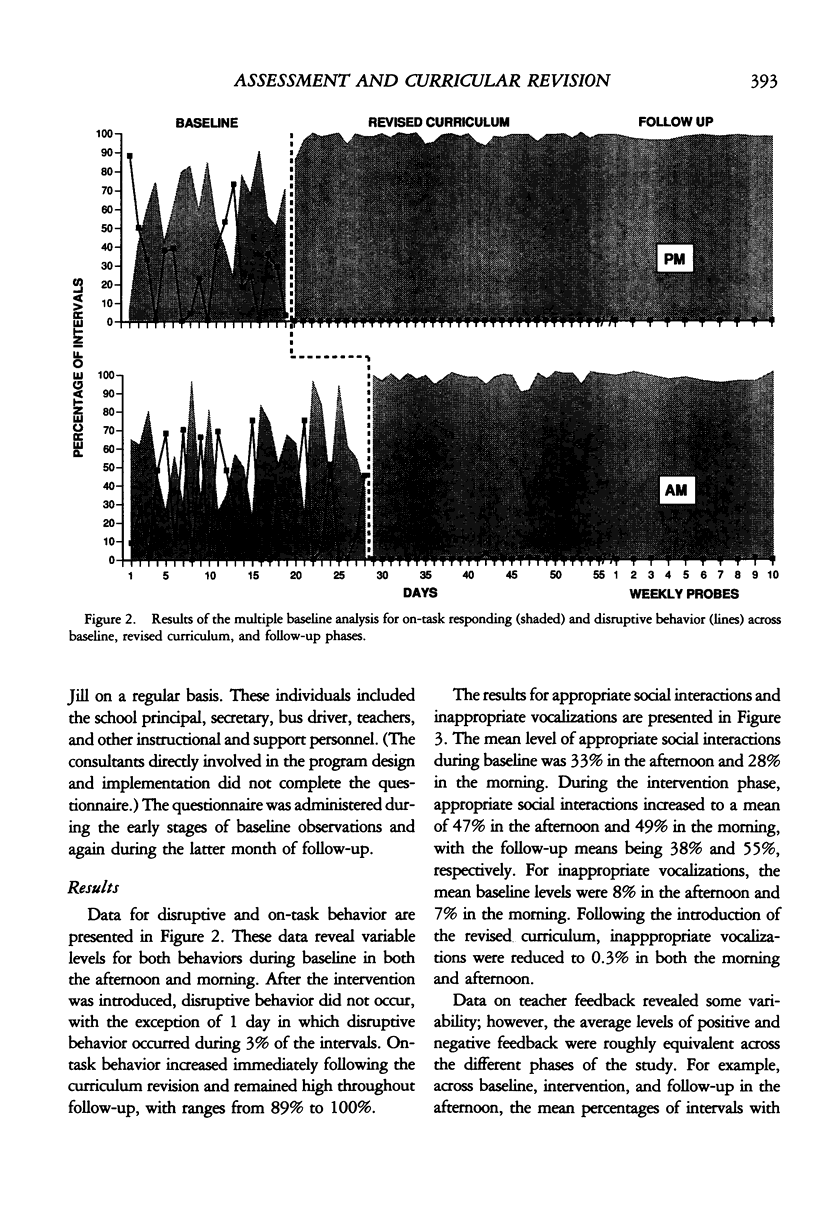
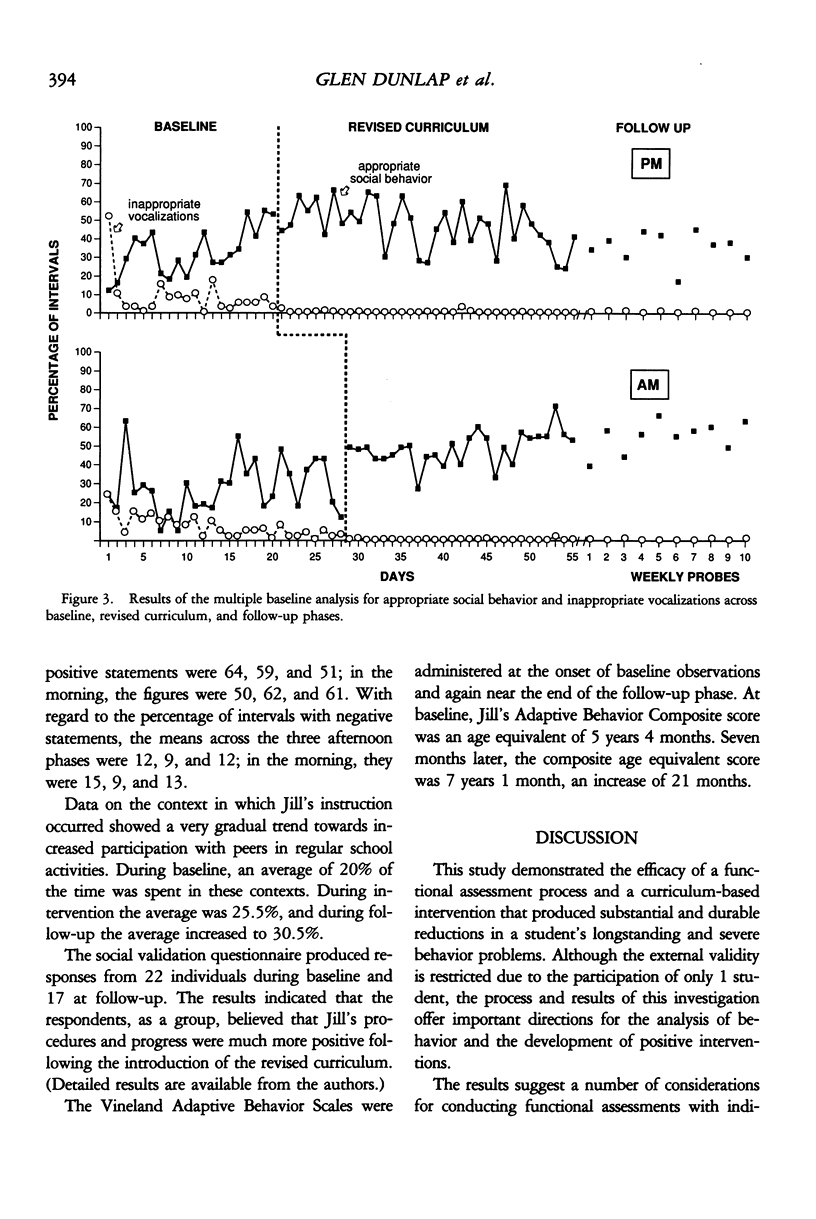


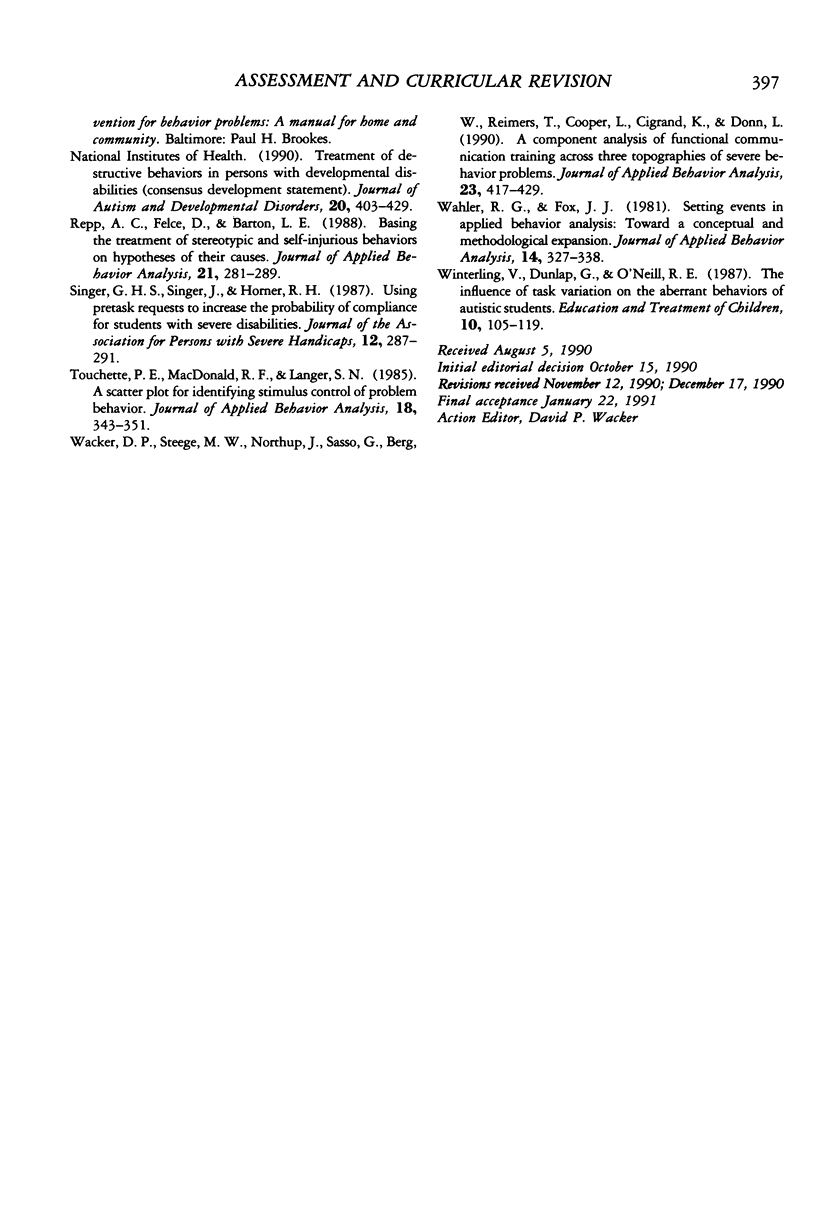
Selected References
These references are in PubMed. This may not be the complete list of references from this article.
- Carr E. G., Durand V. M. Reducing behavior problems through functional communication training. J Appl Behav Anal. 1985 Summer;18(2):111–126. doi: 10.1901/jaba.1985.18-111. [DOI] [PMC free article] [PubMed] [Google Scholar]
- Dyer K., Dunlap G., Winterling V. Effects of choice making on the serious problem behaviors of students with severe handicaps. J Appl Behav Anal. 1990 Winter;23(4):515–524. doi: 10.1901/jaba.1990.23-515. [DOI] [PMC free article] [PubMed] [Google Scholar]
- Haring T. G., Kennedy C. H. Contextual control of problem behavior in students with severe disabilities. J Appl Behav Anal. 1990 Summer;23(2):235–243. doi: 10.1901/jaba.1990.23-235. [DOI] [PMC free article] [PubMed] [Google Scholar]
- Repp A. C., Felce D., Barton L. E. Basing the treatment of stereotypic and self-injurious behaviors on hypotheses of their causes. J Appl Behav Anal. 1988 Fall;21(3):281–289. doi: 10.1901/jaba.1988.21-281. [DOI] [PMC free article] [PubMed] [Google Scholar]
- Touchette P. E., MacDonald R. F., Langer S. N. A scatter plot for identifying stimulus control of problem behavior. J Appl Behav Anal. 1985 Winter;18(4):343–351. doi: 10.1901/jaba.1985.18-343. [DOI] [PMC free article] [PubMed] [Google Scholar]
- Wacker D. P., Steege M. W., Northup J., Sasso G., Berg W., Reimers T., Cooper L., Cigrand K., Donn L. A component analysis of functional communication training across three topographies of severe behavior problems. J Appl Behav Anal. 1990 Winter;23(4):417–429. doi: 10.1901/jaba.1990.23-417. [DOI] [PMC free article] [PubMed] [Google Scholar]
- Wahler R. G., Fox J. J. Setting events in applied behavior analysis: Toward a conceptual and methodological expansion. J Appl Behav Anal. 1981 Fall;14(3):327–338. doi: 10.1901/jaba.1981.14-327. [DOI] [PMC free article] [PubMed] [Google Scholar]


